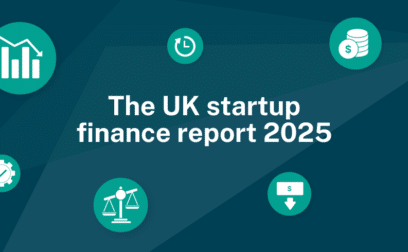TABLE OF CONTENTS
Page written by Chris Godfrey. Last reviewed on July 8, 2025. Next review due April 6, 2027.

Funding major projects out of working capital or through traditional forms of business borrowing can place strain on any organisation’s cash flow or create risk that could harm the long-term health of the company. Project finance overcomes these hurdles by creating a self-contained, special purpose entity that can attract investment, manage project cash flow and better mitigate the risks.
Project finance is a popular method of funding for large-scale, long-term infrastructure, industrial, or public service projects. Widely used in the UK, this type of financing is structured so the project is ring-fenced within a separate legal entity known as a Special Purpose Vehicle (SPV) – this is a standalone company created specifically for the project, and which is responsible for raising the necessary capital as equity from investors or debt from lenders.
Using an SPV isolates the project’s assets, liabilities, and cash flows from those of the sponsor. This means that if the project fails, lenders can only recover from the project’s assets and revenues, not from the sponsors’ other resources.
Project finance is particularly common in sectors such as renewable energy, oil extraction and infrastructure, often via a Public-Private Partnership (PPP). Under this arrangement, private sector partners finance, design, build, and operate facilities for the public sector, which in turn pays a long-term fee to the private partner, enabling repayment of the debt used to fund the project.
Project finance is a structured, long-term financing solution for large-scale projects. Lenders rely primarily on the project’s own cash flows and assets for repayment, while the risks are shared among multiple stakeholders through carefully drafted contracts.
Project finance can support a wide range of developments, including:
Project finance is a key feature of UK infrastructure and construction projects. It can provide these developments with substantial funding without overburdening public or private balance sheets. Project finance allows risk sharing among stakeholders, can attract diverse investors, and ensure repayment from project cash flows. Additionally, long-term contracts can provide stable revenue, while efficient risk allocation and clear cash flow management can enhance project viability and deliver economic growth, jobs, and improved public services.
Project finance offers renewable energy and utility projects a robust framework for raising capital while minimising risks – an approach that can attract a diverse range of investors and lenders, including those seeking green and sustainable investment opportunities.
Project finance allows for the leveraging of government incentives and subsidies, reducing upfront costs and enhancing the economic viability of renewable installations. Additionally, it can support the UK’s transition to net zero by facilitating large-scale deployment of solar, wind, and other clean technologies. The end results can be environmentally beneficial—such as reducing carbon emissions, but also drive job creation, economic growth, and improved energy security. Ultimately, project finance can ensure that renewable energy and utility projects are financially sustainable and aligned with global and national climate goals.
Large-scale corporate developments can derive significant advantages from project finance, primarily through risk reduction and enhanced financial flexibility. The limited-recourse structure of project finance supports investment in ambitious, capital-intensive projects by making them more manageable and less financially threatening to the corporate entity.
Project finance also enables access to a broader pool of capital and investors, including banks, private equity, and institutional funds, by leveraging the project’s own cash flows and assets rather than relying solely on the sponsor’s creditworthiness. Additionally, the efficient allocation of risks among stakeholders—such as lenders, contractors, and suppliers—further enhances project viability and can lead to higher returns for investors if the project succeeds.
Like all forms of business financing, project finance comes with advantages and disadvantages:

Pros

Cons
Project finance and traditional business loans differ in structure, risk, and repayment methods.
Project finance is tailored for large-scale, capital-intensive projects—such as infrastructure, energy, or construction—where funding is secured primarily by the project’s assets and future cash flows. Repayment depends on the project’s success, and risk is shared among stakeholders, with lenders having limited or no recourse to the sponsor’s other assets. In contrast, traditional business loans are simpler, relying on the borrower’s overall creditworthiness and often requiring collateral to support the loan. Repayment is based on the business’s general revenues, not a specific project.
In summary, project finance is complex and suited for big, risky ventures, while traditional loans are better for established businesses seeking straightforward, flexible funding for smaller projects or ongoing operations.
Project finance schemes are complex, multi-party endeavours. Getting these types of scheme through to a successful conclusion requires adherence to a structured plan:
The initial stage of any project finance scheme involves identifying suitable projects and conducting comprehensive planning and feasibility assessments. Stakeholders define project objectives, scope, and deliverables, while technical, economic, and financial feasibility studies are performed to evaluate the project’s viability. This includes market analysis, environmental impact assessments, and preliminary cost estimates, ensuring the project is technically sound and commercially attractive before proceeding.
The second stage is risk assessment. This is a critical undertaking, where potential risks—including construction, operational, financial, and regulatory risks—are identified and analysed. Mitigation strategies are developed and allocated to the parties best suited to manage them, often through contractual agreements. This process ensures that risks are minimised and transparently shared among project participants, protecting all stakeholders from unexpected losses.
During this stage, detailed financial models are created to forecast cash flows and returns. Sponsors and project managers negotiate with lenders and investors to secure the necessary debt and equity financing. Key legal documents—such as term sheets, loan agreements, and shareholder agreements—are drafted and finalised. The process culminates in the financial closing, where all funding is secured, contracts are signed, and funds are made available for project implementation.
Once funding is secured, project execution can begin. This phase of the project will be closely monitored to ensure adherence to timelines and budgets. As the project becomes operational, ongoing monitoring and reporting ensure performance targets must be met. Cash flows generated by the project are used to service debt and provide returns to investors, continuing until the project’s obligations are fulfilled and all debt is repaid.
Applying for project finance is different than applying for traditional business loans.
Firstly, you’ll need to prepare a detailed project proposal, including technical, financial, and commercial information, and conduct feasibility studies to demonstrate viability. Next, you should compile your business and financial documentation, such as financial statements, cash flow projections, and risk assessments. When your project is ready for submission, you’ll need to identify suitable lenders—banks, institutional investors, government agencies, etc. In many cases it may be best to engage brokers or consultants to assist you with this crucial task.
Once your formal application is submitted, lenders will conduct due diligence, including site visits and credit checks. If approved, negotiations will lead to final contracts and funding. Throughout, you must ensure compliance with regulatory and legal requirements, including registering the project company at Companies House if forming an SPV.
You can search for project finance by approaching banks, commercial loan providers and public funders one by one. However, be aware that this process can be slow and complicated and could take weeks or months to complete. Alternatively, you could use the services of a finance marketplace. This type of online platform works with a large pool of financing sources and can immediately introduce you to a choice of funding from a range of lenders and investors. They may also be able to give you advice and help you with the application process. This can be especially useful for businesses that have never applied for project finance before.
Project finance isn’t the only way to fund major projects. Alternatives are available:
Venture capital (VC) and private equity refer to funding that’s provided by investors in exchange for shares in the company. Venture capital is typically used by startups and fast-growing businesses to get a business off the ground or drive rapid expansion, whereas private equity tends to invest in more mature, established businesses. However, both options can also be used to fund a major project.
Unlike traditional financing, VC and private equity both rely on the future potential of the business or project to support the funding, instead of relying on hard assets such as property and equipment or personal guarantees. This can make this type of funding a good option for project financing or when avenues to more traditional sources of funds are closed. However, while this type of financing can provide substantial funds and strategic support, it also means giving up some ownership and control to investors who typically expect high returns and want a say in key decisions.
Public-Private Partnerships (PPPs) are collaborative agreements between government bodies and private businesses to finance, build, and operate infrastructure or public services. In a PPP, the private sector typically invests capital, assumes project risks, and handles construction or operation, while the public sector provides oversight and long-term payments or user-based revenues. In the UK, the public aspect of PPP typically comes from central or regional government departments, such as the National Infrastructure and Service Transformation Authority.
Infrastructure bonds are long-term debt securities issued by government bodies, public-private partnerships, or corporations to raise capital specifically for infrastructure projects, such as roads, railways, energy facilities, and hospitals. These bonds offer fixed or inflation-linked returns over a set period, appealing to investors seeking stable, long-term income.
Institutional funding refers to investments made by large entities such as pension funds, insurance companies, and sovereign wealth funds. In the UK, these institutions typically seek predictable, long-duration assets that match their long-term liabilities, which makes infrastructure an ideal investment class.
Working with business finance experts can make all the difference when applying for funding. Contact Swoop to discuss your financial needs, get help with your application and to compare high-quality project finance deals from a choice of lenders and investors. Get that major project started without any hassle. Register with Swoop today.
Written by
Chris is a freelance copywriter and content creator. He has been active in the marketing, advertising, and publishing industries for more than twenty-five years. Writing for Barclays Bank, Metro Bank, Wells Fargo, ABN Amro, Quidco, Legal and General, Inshur Zego, AIG, Met Life, State Farm, Direct Line, insurers and pension funds, his words have appeared online and in print to inform, entertain and explain the complex world of consumer and business finance and insurance.
Swoop promise
At Swoop we want to make it easy for SMEs to understand the sometimes overwhelming world of business finance and insurance. Our goal is simple – to distill complex topics, unravel jargon, offer transparent and impartial information, and empower businesses to make smart financial decisions with confidence.
Find out more about Swoop’s editorial principles by reading our editorial policy.
Related pages
Get your free Project finance quote today
Join the 110,000+ businesses just like yours getting the Swoop newsletter.
Free. No spam. Opt out whenever you like.



























We work with world class partners to help us support businesses with finance
Kingfisher Way, Silverlink Business Park, Newcastle upon Tyne, NE28 9NX, UK
View in Google MapsAberystwyth Innovation and Enterprise Campus
Gogerddan Campus
Aberystwyth University
Ceredigion
SY23 3EE
Dogpatch Labs, The CHQ Building, Custom House Quay, Dublin, Ireland
View in Google MapsSuite 801, Level 8, 84 Pitt Street, Sydney, NSW 2000, Australia
View in Google Maps43 W 23rd St, New York, NY 10010, United States
View in Google Maps21 Dreyer Street, Cape Town, South Africa, 7708
View in Google Maps
Disclaimer: Swoop Finance helps UK firms access business finance, working directly with businesses and their trusted advisors. We are a credit broker and do not provide loans or other finance products ourselves. We can introduce you to a panel of lenders, equity funds and grant agencies. Whichever lender you choose we may receive commission from them (either a fixed fee of fixed % of the amount you receive) and different lenders pay different rates. For certain lenders, we do have influence over the interest rate, and this can impact the amount you pay under the agreement. All finance and quotes are subject to status and income. Applicants must be aged 18 and over and terms and conditions apply. Guarantees and Indemnities may be required. Swoop Finance can introduce applicants to a number of providers based on the applicants’ circumstances and creditworthiness. Swoop Finance Limited is registered with the Financial Conduct Authority as an Account Information Services Provider (reference number 833145). Swoop Finance Limited is authorised as a credit broker under FCA registration number 936513. If you feel you have a complaint, please read our complaints section highlighted above and also contained within our terms and conditions. Swoop Finance Ltd is registered with Companies House (company number 11163382, registered address The Stable Yard, Vicarage Road, Stony Stratford, Milton Keynes MK11 1BN). VAT number: 300080279
Clever finance tips and the latest news
Delivered to your inbox monthly
Join the 110,000+ businesses just like yours getting the Swoop newsletter. Free. No spam. Opt out whenever you like.
Thanks for requesting a call back
a member of the team will be in touch.




